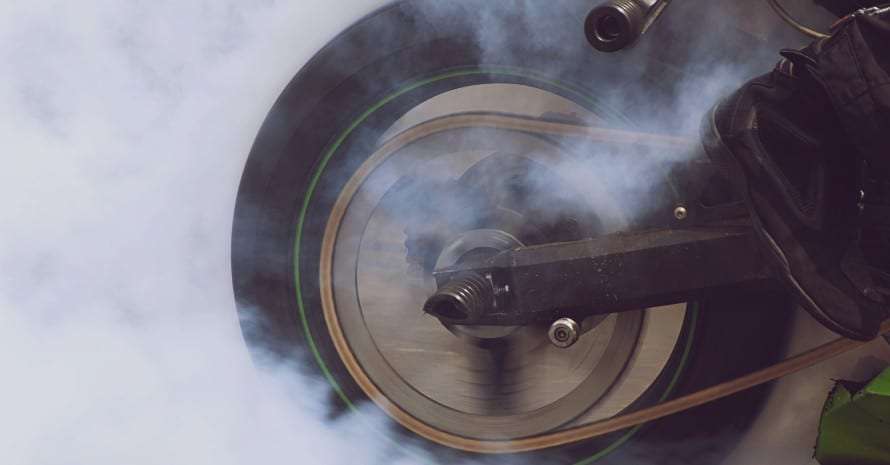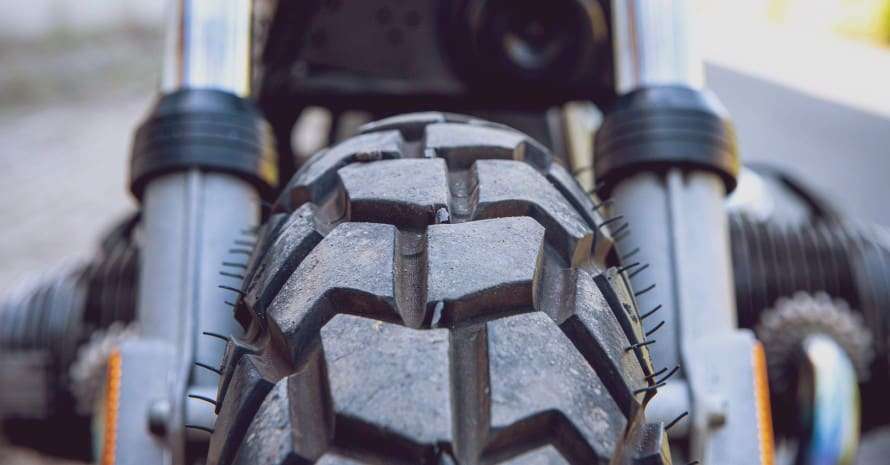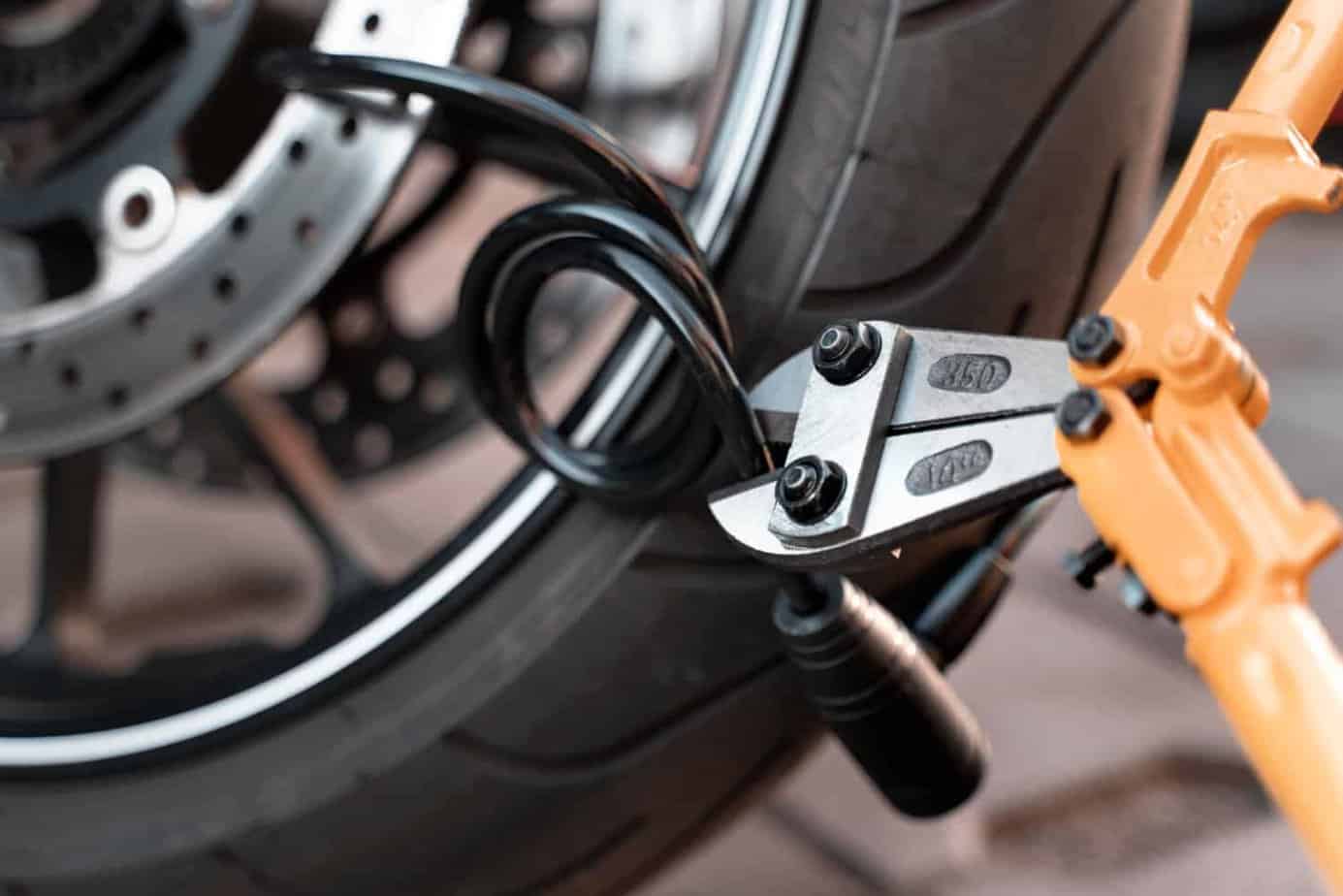It is important to check your motorcycle tires regularly to make sure they are in good condition and not damaged. They can wear out and fail for a number of reasons, such as poor inflation, overloading, or excessive speed. Damaged or worn rubber can cause steering problems and lead to accidents and serious injuries. And in some cases, death for the driver.
If you see obvious signs of wear or damage, such as cracks, bulges, or flat spots, it’s immediately clear that the tire should be replaced. And keep a good motorcycle tire repair kit with you at all times. In any situation, you can service the tires of your motorcycle and get to the service.
But there are also not so noticeable problems with the rubber, so read this article to learn more about the life of motorcycle tires and when you should replace them.
How Long Does Motorcycle Tires Last on Your Motorcycle?
If you follow the manufacturer’s recommendations when it comes to motorcycle rubber life, and with proper care and maintenance, they can last much longer than average. In general, motorcycle tires’ mileage will last between 2,500 and 5,000.

Most motorcyclists know that tires have a finite lifespan, and sooner or later, they have to be replaced. But how long do motorcycle tires last? There are a number of factors that can affect their lifespan, from the type of rubber to how you ride.
Below, we’ll talk about the most important factors to keep in mind when trying to determine how long your tires should last.
Factors Affecting the Durability of Your Motorcycle Tires
As mentioned before, many factors can affect the life of your bike’s rubber. For example, the type of terrain you ride on, your riding style, the weight of your vehicle, and the weather can cause your tires to fail faster. In addition, the type of tires you choose also affects their lifespan: all-terrain tires will last longer than street tires.
Also Read: Best Auto Tuner for Harley Davidson in 2022
That’s why we’ve detailed the main causes of rapid rubber wear, so you’ll know what to avoid.
1. Quality of the Tires
It is common knowledge that rubber quality affects its longevity. In general, the higher it is, the longer the tire will last you. This is because higher-quality products are made from better materials and have better construction. In addition, high-quality models often have better tread patterns and are designed for certain types of riding.
Also Read: Best Tires for a Harley Street Glide: Top 7 in 2022
The Type of Material Used in the Construction of the Tire
There are two types:
- natural;
- synthetic.
Natural rubber is made from the sap of rubber trees, while synthetic rubber is made from petroleum products. Synthetic rubber is usually of higher quality because it is more resistant to heat and wear. It also usually has a longer service life.
The Type of Carcass Used
There are two main types:
- radial;
- bias.
Radial tires are more rugged and are designed for use on paved roads. Bias tires are not as durable as radial tires, but they are designed for use on both paved and unpaved roads.
2. Type and Performance of the Motorcycle
One of the most important factors in determining the life of a rubber is the type of motorcycle you ride. Cruiser bikes, such as Harley-Davidson, usually have larger tires than sports bikes. Therefore, cruisers usually own more rubber life. Motorcycles for sport, on the other hand, tend to be operated in harsher and more extreme conditions, which also leads to more frequent tire changes.
Also Read: Best Tires for Harley Davidson Touring in 2022
3. Your Riding Habits
Your driving habits also affect how long your motorcycle tires last. If you’re an aggressive rider who constantly pushes your bike to the limit, your tires will wear out much faster than a more conservative rider. So if you’re a fan of extreme riding, tight corners, and hard braking, don’t neglect to change your tires often.
Constant stops and frequent starts from a place also accelerate tire wear.
4. Road and Weather Conditions
The type of road surface you ride on can have a big impact on your tires. If you’re driving on a rough or uneven surface, it can put more stress on your tires and cause them to wear out more quickly. Likewise, if you cross terrain with a lot of debris or obstacles, it can also cause premature wear.
However, weather can also play a role in the longevity of your tires. If you’re driving in very hot or cold weather, it can put extra strain on the rubber. Likewise, if it’s wet outside, it can also lead to increased wear and tear.
5. Tire Maintenance and Storage
Tire maintenance is one of the most important aspects of motorcycle ownership, which not only prolongs their life but also ensures your safety. Proper rubber maintenance will help to ensure the longest possible life for it. So don’t forget to inspect it regularly, clean it properly, and inflate it if necessary.
When it comes to storage, it’s important to keep your tires in a cool, dry place. This will help prevent premature wear or damage. If you have to store your motorcycle tires outside, be sure to cover them with a tarp or other type of protective cover. Direct sunlight and precipitation contribute to faster wear and tear on the rubber.
How Many Miles Can You Get on a Motorcycle Tire?
On average, with regular maintenance, tires on motorcycles can last about 5,000-10,000 miles, but with a very soft ride, the tires can stretch 10,000-15,000. Motorbike rubber should be replaced when the tread wears down to 2/32 inches.
As mentioned before, there are a number of factors that affect the life of the rubber. Also, for those who ride out a couple of times a month, it will certainly last much longer.
Also Read: Can You Ride a Motorcycle in the Rain?
Below is a table with possible options for the number of miles that can be driven on one set of tires. Everything will depend on the type of riding and the type of motorcycle.
How Often to Replace Motorcycle Tires?
It is usually recommended that you replace them every 3,000 to 5,000 miles, although some manufacturers may recommend changing your tires sooner. The frequency of replacement is affected by many factors, including the type of motorcycle, the type of rubber you use, your riding style, and the conditions you ride in since, as mentioned before, they can contribute to faster wear.

But the first place to start is to study your owner’s manual. It will contain the manufacturer’s specific recommendations on how often to replace your motorcycle tires.
Should You Always Replace Both Tires?
It is usually recommended that you replace both tires on your motorcycle at the same time. There are several reasons for this:
- It helps to keep the handling balanced. If one is significantly newer or in better condition than the other, the handling of the motorcycle may be affected.
- It helps avoid premature wear on the new rubber. If the other is significantly worn, it may cause the new one to fail more quickly.
- It will help maintain consistent traction. If one tire has significantly more tread than the other, this can cause the bike to slip or slide.
But if you don’t have the option of changing two at the same time, you can leave the front one as it tends to be less stressful. But that’s only if it’s not damaged.
Tips for Motorcycle Tire Care
You can always extend the life of your motorcycle tires. To do this, you need to follow simple rules, which you can read below.
Also Read: Can You Ride Motorcycle in Snow?
1. Tire Care
One of the most important things you can do to extend the life of your bike’s rubber is to keep it clean. Tires covered in dirt, mud, and debris will wear out much faster than clean ones. Be sure to clean them after every ride, using a soft brush and soapy water. You can also use a shine agent to keep them looking like new.
It is also important to check them regularly for signs of wear and tear. Look for cracks, cuts, or nicks. If you see any damage, it’s best to replace the tire right away. Also, check the air pressure at least once a week. An underinflated rubber wears out much faster than a properly inflated one.
2. Driving in Extreme Weather Conditions
If possible, avoid driving in extreme weather conditions. Driving in hot weather can cause your tires to expand, which can lead to premature wear. Driving in cold weather can make the rubber stiffer, which can also lead to premature wear. Also, driving in wet weather can cause your tires to slip, which can cause an accident.
If you have to drive in extreme weather conditions, be sure to take extra precautions. In hot weather, drive at a slower speed and take frequent breaks to avoid overloading the rubber. In cold weather, warm up your wheels before you ride to avoid damage. And in wet weather, drive slowly and be especially careful on slippery roads.
3. Choosing the Right Tires
The type of rubber you choose also affects its lifespan. For example, all-terrain tires will last longer than street tires. They are designed for harsher handling so that they can withstand riding over rough terrain without damage. Street tires, on the other hand, are designed for riding on asphalt and are not as durable.
If you often drive off-road, it’s better to choose all-terrain tires. If you only ride on asphalt, street tires will work for you. But if you combine both, you may want to get a set of each. That way, you can swap out the rubber depending on where you ride.
How Do I Know I Need New Tires?
Here are a few signs that it’s time to change your tires:
- Visible wear and tear. If you see your tires showing signs of wear, it’s probably time for new ones. These could be cracks, uneven wear, or nicks.
- Age of motorcycle tires. Even if they don’t look worn, motorcycle tire lifespan is limited. Most manufacturers recommend replacing rubber every 3 to 5 years, even if they don’t look worn out.
- Your motorcycle seems “squishy” or unstable. If your bike feels like it is losing traction or stability, worn rubber may be to blame.
- You often ride over rough terrain. If you often ride on dirt roads or other rough terrains, you need to change them a lot more often.
- You have a flat tire. If you’ve had to patch or replace a rubber because of a puncture, it’s recommended that you replace it.
If you are unsure if you need to replace your tires, it is always a good idea to consult with a qualified motorcycle mechanic. He or she can inspect your rubber and give you professional advice on whether or not it needs to be replaced.
FAQ
Do I need to balance motorcycle tires?
Yes, it is important to maintain wheel balance so that the bike rides smoothly, handles well, and does not experience excessive vibrations. It is also important for safety reasons because an unbalanced wheel can cause the bike to wobble or shake, making it difficult to control.
Can I change a motorcycle tire myself?
It is possible to change a motorcycle tire yourself, but it is not recommended unless you have experience with this type of work. The process is fairly simple, but it does require some specialized tools and knowledge.
How long does it take to swap motorcycle tires?
Changing motorcycle tires takes about 30 minutes if you follow the correct procedure and have the right tools. To remove the wheel, first, loosen the axle bolts and then the axle nut. Then unscrew the brake caliper bolts and slide the caliper off the rotor. Finally, remove the wheel bolts and the wheel. To install the new wheel, first, align the wheel bolts and then tighten them. Then put the brake caliper on the rotor and bolt it on. Finally, tighten the axle bolts and the axle nut.
Conclusion
Even with approximate figures of 3,000-15,000 miles, you should not count on how much you can ride a motorcycle without inspecting and changing tires. Always monitor their condition and do not forget about care.
It is important to check the rubber of your two-wheeled friend before every ride. Look at the depth of the tread and its condition. It is also important to check the tire pressure to make sure it is properly inflated. Overinflated or underinflated tires can affect handling and cause problems.
If you don’t know how to tell if a tire needs replacing, be sure to use this article. Quality rubber is the key to a safe ride.
Bruce was born in Atlanta. He started riding motorcycles when he was 10 and has been passionate about them since. Bruce says he feels absolute freedom when he’s on two wheels. He prefers riding his bike slowly and smoothly along a country road and hardly ever enjoys wildly speedy rides. With a strong Ducati Multistrada 1200 in the current stable, Bruce enjoys his super powerful, comfortable and easy rides. Ducati Diavel is the beast he’s currently dreaming about…
